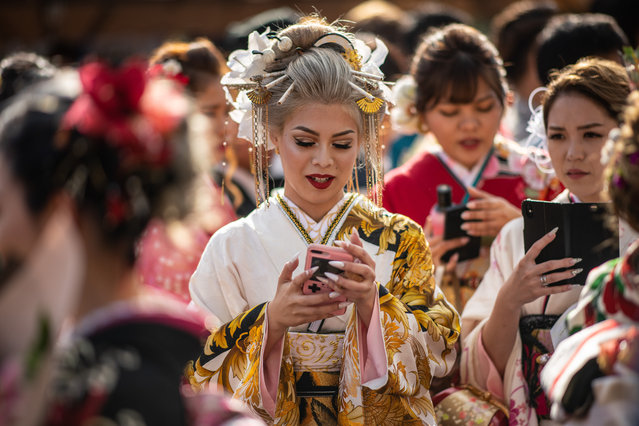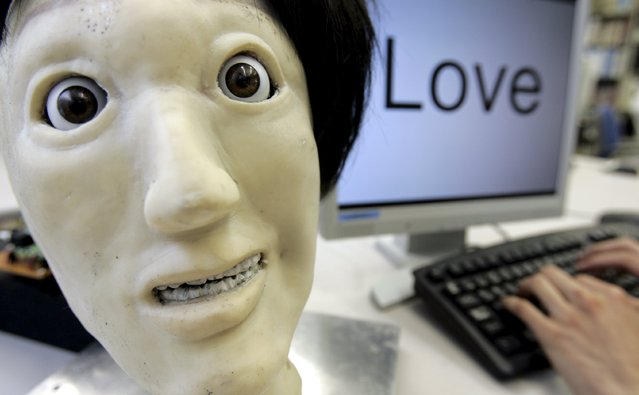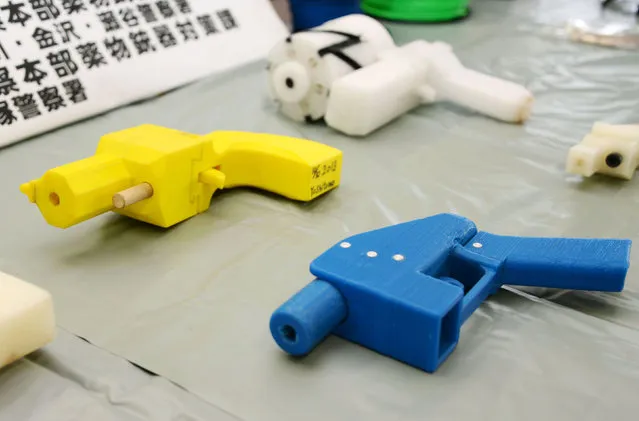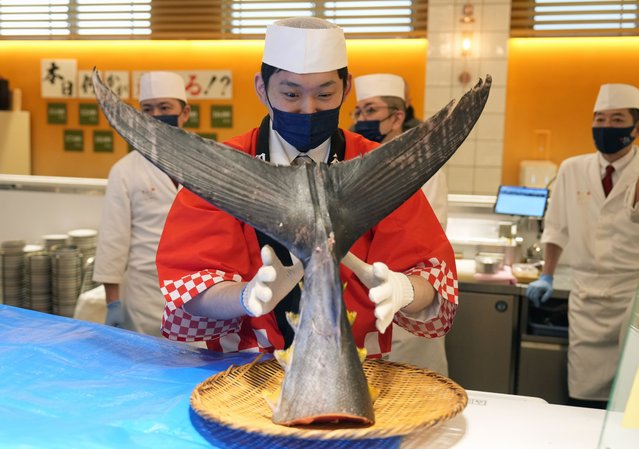
An Okinawan woman in a kimono checks her phone before attending a ceremony on Coming of Age Day on January 13, 2019 in Okinawa City, Japan. Coming of Age Day is a Japanese holiday held every January to celebrate people who have reached 20 – the official age of adulthood in Japan. Despite being a solemn affair in some parts of Japan, Okinawans have become known for their flamboyant and occasionally boisterous celebrations. (Photo by Carl Court/Getty Images)
15 Jan 2019 00:05:00,post received
0 comments







